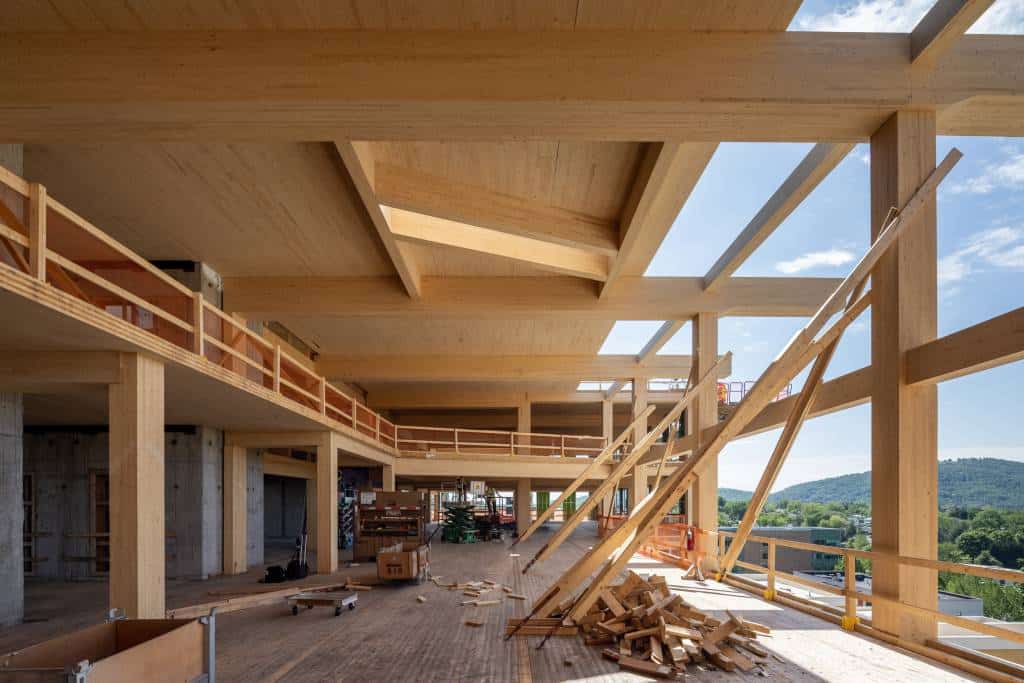January 23, 2013
Source Link: https://www.worldbank.org/en/news/feature/2013/01/23/ecuador-innovates-with-bamboo-houses-for-the-poor
STORY HIGHLIGHTS
- A new technique facilitates the construction of ecological structures based on Ecuadorean bamboo.
- Low-income families benefit with dignified, safe houses that are environmentally friendly.
- Flooding no longer poses a problem.
“I like my new house because unlike in my aunt’s house, where we used to live, there’s no more leaks; no mosquitoes get in; no mud comes in when it rains; and especially because it’s not too hot or too cold,” says Lilibeth Abad, the oldest of five siblings of a family living in Monte Sinaí, a poor neighborhood of Guayaquil.
Like Lilibeth, many families have improved their living conditions thanks to the housing they received from the project “Elevated Bamboo Houses to Protect Communities in Flood Zones.” These houses are built of caña guadúa, a type of bamboo native to Ecuador.
Eugenia, a single mother of four, also mentioned that the new house has made life easier because previously, besides washing clothes, cleaning houses and selling food to support her family, she had to deal with problems associated with the frequent floods triggered by the torrential rains typical of Ecuador’s rainy season, which is between December and June.
Today, the project of the International Network for Bamboo and Rattan (INBAR), financed by the World Bank, has built a variety of structures. These include two shelters, three classrooms and five houses, which have given people like Eugenia and Lilibeth dignified, safe dwellings for themselves and their families.
INBAR and the Corporación Hogar de Cristo, partners in the implementation of the project, have created four different housing prototypes in marginal urban areas of Guayaquil. These houses, which are elevated a few meters above the ground, are not only flood-resistant, but also provide other benefits thanks to the Ecuadorean bamboo, such as maintaining stable temperatures and low humidity levels.
” I like my new house because unlike in my aunt’s house, where we used to live, there’s no more leaks; no mosquitoes get in; no mud comes in when it rains; and especially because it’s not too hot or too cold. “
Lilibeth Abad
Recipient of a bamboo house from the project, Monte Sinaí, Guayaquil.
Bamboo as an alternative
Ecuadorean bamboo grows throughout the coastal and rainforest areas of the country. This material is environmentally sustainable and dwellings made from it have been designed to take full advantage of its potential. Housing design permits good ventilation to cool the environment during the hottest months of the year. Highs ceiling protect the structure and the walls from the sun and rain. One thousand to 1,200 six-meter bamboo posts or stalks are needed to build each house.
Since the walls (panels) and structure of the house are pre-fabricated, the new technique using bamboo enables houses to be completed in just two weeks. Bamboo houses can last several years if properly maintained.
INBAR was one of the winners of the Development Fair competition organized by the World Bank in 2009. The proposal “Elevated bamboo houses to protect communities in flood zones” was selected among 1,755 entries in the contest “100 ideas to save the planet.”
Each winner received US$ 200,000 to develop an innovative proposal for the design of bamboo houses in poor areas that were highly vulnerable to natural disasters caused by landslides or floods, phenomena that have been on the rise due to the effects of climate change.
“The project enabled us to have pilot areas of bamboo housing, which have created interest among NGOs that promote social housing, such as the Corporación Hogar de Cristo and Fundación Techo, as well as the private sector, which is currently developing strategies that include the new housing design developed by this project,” said Álvaro Cabrera, INBAR regional coordinator.
Located in the provinces of Guayas and Santa Elena in Ecuador, these dwellings not only represent a new way of living for beneficiaries, but also a sustainable solution to the challenges of climate change.
